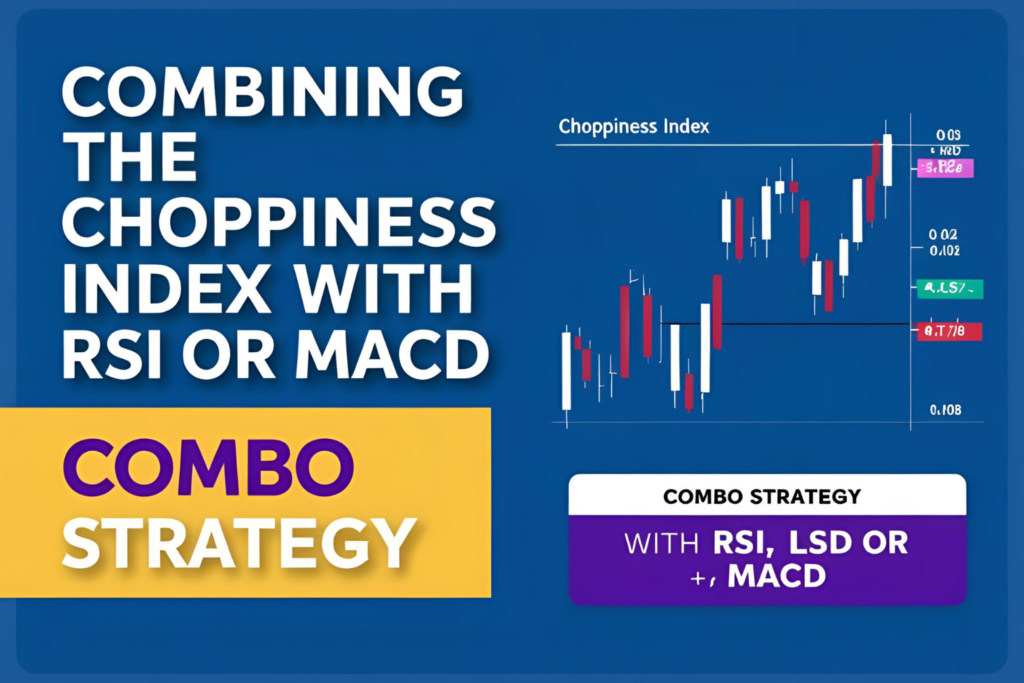Introduction
The Choppiness Index is great for identifying whether the market is trending or ranging, but it doesn’t show direction. That’s where RSI (Relative Strength Index) and MACD (Moving Average Convergence Divergence) come in. When combined, these indicators offer a powerful edge in trend identification and entry timing.
Why Combine These Indicators?
| Indicator | Function |
|---|---|
| Choppiness Index | Measures market condition (choppy vs trending) |
| RSI | Measures momentum and overbought/oversold conditions |
| MACD | Measures trend direction and strength |
Using them together can help you:
- Avoid trading in sideways markets
- Confirm trend direction and strength
- Time entries with greater precision
Strategy 1: Choppiness Index + RSI
Setup:
- CI period: 14
- RSI period: 14
- Timeframe: 1H or 4H chart
Entry Rule:
- CI < 38.2 (market is trending)
- RSI crosses above 50 (for long) or below 50 (for short)
Exit Rule:
- RSI reaches overbought/oversold zone
- CI rises back above 60
Strategy 2: Choppiness Index + MACD
Setup:
- CI period: 10–14
- MACD: 12, 26, 9
- Timeframe: 15-min to daily chart
Entry Rule:
- CI < 38.2 (indicates trending market)
- MACD line crosses above signal line (bullish) or below (bearish)
Exit Rule:
- MACD crossover in opposite direction
- CI rises above 60 (signals consolidation may begin)
Benefits of These Combinations
✅ Avoid trades during uncertain market phases
✅ Get clearer confirmation for trend-following strategies
✅ Flexible — works on all asset classes and timeframes
✅ Easy to set up on platforms like TradingView, MT4, or NinjaTrader
Mistakes to Avoid
⚠ Using Choppiness Index to predict direction — it only measures trend strength
⚠ Ignoring divergences in RSI or MACD
⚠ Not confirming volume or price action before entry
Best Use Cases
- Swing trading in stocks or crypto
- Intraday trading with tight setups
- Breakout confirmation when price is leaving consolidation zones
FAQs
1. Can I use all three indicators at once?
Yes. Many traders use Choppiness Index to detect trend phase, then RSI and MACD for direction and momentum.
2. Which is better with Choppiness Index: RSI or MACD?
RSI is better for momentum reversals, while MACD is better for trend confirmation.
3. Do these indicators repaint?
No. All three are based on historical data and do not repaint signals.
4. Can I automate this strategy?
Yes. Most platforms allow custom script strategies using this indicator combo.
5. Is this setup beginner-friendly?
Absolutely. It’s one of the simplest and most effective combinations for trend-based strategies.
